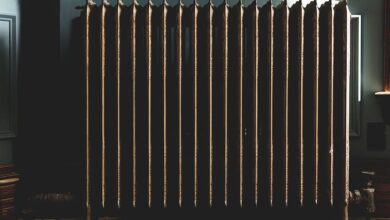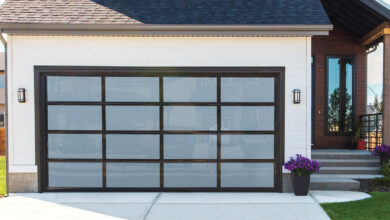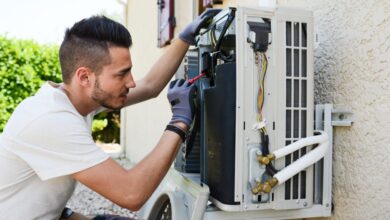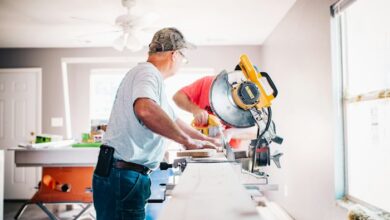8 Types of Metal Roofing To Consider in 2023
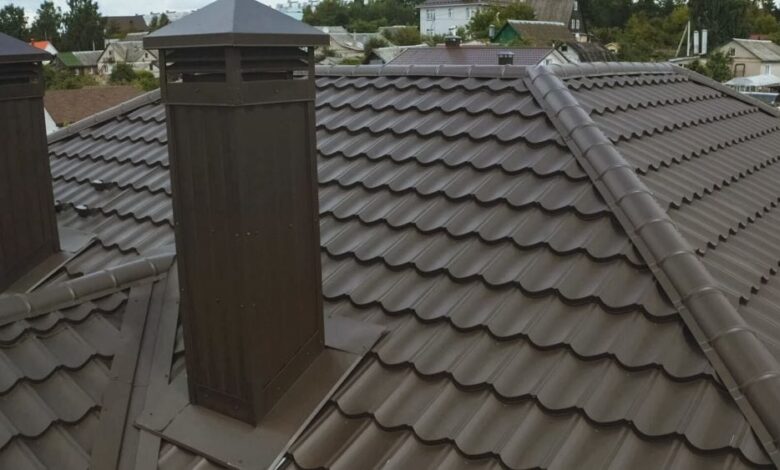
Are you looking to give your home a sleek and modern upgrade? Metal roofing may be just the solution you need! With its durability, energy efficiency, and aesthetic appeal, metal roofing has become increasingly popular among homeowners. But with so many different types of metal roofing available, how do you choose the right one for your home? In this blog post, we will explore eight types of metal roofing that you should consider in 2023. From classic favorites like steel and aluminum to innovative options like copper and zinc, we’ll cover all the pros and cons to help you make an informed decision. So let’s dive into the world of metal roofing and discover which type is best suited for your unique needs!
The Different Types of Metal Roofing
When it comes to metal roofing, there are several different types to choose from. Each type has its own unique characteristics and advantages. Let’s take a closer look at some of the most popular options:
1. Steel Roofing: Steel is one of the most common materials used for metal roofing. It offers exceptional durability and can withstand harsh weather conditions. Additionally, steel roofs are highly resistant to fire and insects.
2. Aluminum Roofing: Lightweight and corrosion-resistant, aluminum roofing is an excellent choice for coastal areas or places with high humidity levels. It requires minimal maintenance and can be easily shaped to fit any architectural design.
3. Copper Roofing: If you’re looking for a distinctive appearance, copper roofing is hard to beat. Over time, copper develops a beautiful patina that adds character to your home’s exterior. It also boasts unmatched longevity and is known for its resistance against rust.
4. Zinc Roofing: Similar to copper, zinc roofs develop a natural patina that gives them an elegant appearance over time. They offer great durability and require little maintenance.
5. Tin Roofing: Tin roofs have been around for centuries due to their affordability and easy installation process.
They provide good protection against elements but may require regular repainting depending on climate conditions.
6. Stainless Steel Roofing:A premium option,stainless steel provides superior strength,longevity,and resistance against corrosion.
Most commonly used in commercial buildings,it can add a sleek,trendy look when applied in residential settings as well
7. Galvalume Metal Roofing: Combining the best of both worlds,Galvalume metal roofing consists of steel coated with aluminum-zinc alloy.
This results in enhanced durability,fade-resistance,and heat reflectivity,making it energy-efficient too!
8. Stone-Coated Metal Roofing : For those seeking versatility,this type combines the benefits of metal with asphalt shingles’ aesthetics.
The roof tiles are made from lightweight galvanized steel covered in stone chips,offering durability and a variety of color options.
Pros and Cons of Metal Roofing
When it comes to choosing a roofing material for your home, metal roofing is an option that should not be overlooked. It offers a range of advantages and disadvantages that are worth considering before making a decision.
One of the biggest pros of metal roofing is its durability. Metal roofs can withstand extreme weather conditions including heavy rain, snow, hail, and strong winds. They are also resistant to fire and can last for decades with proper maintenance.
Another advantage of metal roofing is its energy efficiency. Metal reflects heat from the sun, helping to keep your home cooler in the summer months and reducing your energy bills. Additionally, some metal roofs are coated with special finishes that further enhance their energy-saving properties.
Metal roofs are also lightweight compared to other roofing materials such as asphalt shingles or clay tiles. This makes installation easier and faster, resulting in lower labor costs. Furthermore, their light weight puts less stress on the structure of your home.
However, there are some cons to consider as well. One potential drawback is the initial cost of metal roofing which can be higher than other options like asphalt shingles or wood shakes. However, it’s important to note that while the upfront investment may be higher, the long-term benefits often outweigh this cost difference.
Another disadvantage of metal roofing is its susceptibility to dents caused by falling branches or hailstorms. While most modern metal roofs have protective coatings that minimize denting, it’s still something to keep in mind if you live in an area prone to severe weather conditions.
Noise can sometimes be an issue with certain types of metal roofs during heavy rainfall or hailstorms. However, proper insulation and underlayment can significantly reduce any potential noise problems.
In conclusion (never use “in conclusion”), weighing both sides carefully will help you determine whether metal roofing is right for your home!
Which Type of Metal Roofing is Best for Your Home?
When it comes to choosing the best type of metal roofing for your home, there are several factors to consider. Each type offers its own unique set of benefits and drawbacks, so it’s important to weigh your options carefully.
One popular choice is corrugated metal roofing. This type features ridges and valleys that provide excellent water drainage and durability. It’s also lightweight and easy to install, making it a cost-effective option.
Another option is standing seam metal roofing. This style features raised seams that interlock to create a sleek, modern look. It offers superior weather resistance and can last up to 50 years with proper maintenance.
If you’re looking for a more traditional appearance, consider metal shingle or tile roofing. These options mimic the look of traditional materials like slate or wood but offer the added benefits of being fire-resistant and low-maintenance.
For those seeking maximum energy efficiency, consider cool metal roofing. This type reflects sunlight instead of absorbing heat, helping keep your home cooler in hot climates.
The best type of metal roofing for your home will depend on your preferences, budget, location, and climate conditions. Consulting with a professional roofer can help you make an informed decision based on these factors.
Investing in high-quality materials and professional installation will ensure that your metal roof withstands the test of time while providing long-lasting protection for your home.
How to Install Metal Roofing
Installing metal roofing can be a daunting task for many homeowners, but with the right knowledge and preparation, it is definitely achievable. Here are some steps to guide you through the process of installing metal roofing.
Make sure to measure your roof accurately. This will help you determine how much material you need and ensure a proper fit. Next, remove any existing shingles or old roofing materials from your roof before starting the installation.
Once that’s done, prepare the surface by cleaning it thoroughly and repairing any damaged areas. It’s important to have a smooth and solid base for your new metal roof.
Next, install underlayment to provide an extra layer of protection against moisture and leaks. This step is crucial in ensuring the longevity of your metal roof.
Now comes the actual installation of the metal panels or sheets. Start at one end of the roof and work your way across, making sure each panel overlaps correctly and is secured tightly.
Finish off with ridge caps along the ridges of your roof to provide added protection against water infiltration.
Remember to follow safety precautions throughout the installation process and consider seeking professional help if needed. With careful planning and attention to detail, you can successfully install a beautiful metal roof that will last for years to come!
Maintenance Tips for Metal Roofing
Keeping your metal roof in good condition is essential to ensure its longevity and maximize its benefits. Here are some maintenance tips to help you keep your metal roofing looking great and performing at its best.
1. Regular Inspection: Schedule regular inspections of your metal roof to check for any signs of damage, such as loose or missing screws, dents, or corrosion. Addressing these issues promptly can prevent further damage and costly repairs.
2. Clean Gutters: Clear any debris from your gutters regularly to prevent clogs that can lead to water buildup on the roof surface. This will help maintain proper drainage and avoid potential leaks.
3. Trim Overhanging Branches: Trim tree branches that hang over your metal roof as they can scratch the surface during windy conditions, causing scratches or even punctures.
4. Remove Debris: After a storm or heavy winds, remove any fallen leaves, branches, or other debris from the roof surface promptly. This will prevent moisture accumulation and potential mold growth.
5. Use Proper Cleaning Methods: When cleaning your metal roof, avoid abrasive tools or harsh chemicals that could cause damage to the finish. Instead, use a soft-bristle brush or sponge with mild detergent mixed with water for gentle cleaning.
6. Regular Painting/Recoating: If you have a painted metal roof, consider repainting it every few years to maintain its color vibrancy and protect against fading or peeling.
7. Address Rust Immediately: If you notice any areas of rust on your metal roofing panels, take action immediately by removing the rust using a wire brush and applying an appropriate primer followed by touch-up paint specifically designed for metal roofs.
8. Hire Professional Help when Needed: For more extensive repairs or if you’re unsure about how to properly maintain your specific type of metal roofing system—such as standing seam roofs—consider hiring professional contractors who specialize in working with these materials.
By following these maintenance tips, you can ensure that your metal roofing continues to provide excellent protection.
Conclusion
Metal roofing is a versatile and durable option for homeowners looking to upgrade their roofs. With its various types, including standing seam, corrugated, and metal shingles, there’s a style to suit every home’s aesthetic.
When considering metal roofing for your home, it’s essential to weigh the pros and cons of each type. While metal roofs offer longevity, energy efficiency, and low maintenance requirements, they can be costly upfront.
To ensure a successful installation process, hiring professional contractors experienced in working with metal roofing is crucial. They will not only install the roof correctly but also advise on the best materials and techniques for your specific needs.
Once installed, maintaining your metal roof is relatively simple. Regular inspections and cleaning are key to preserving its appearance and performance over time. A proactive approach will help identify any potential issues before they become significant problems.
Choosing the right type of metal roofing requires careful consideration of factors such as climate conditions, budget constraints, desired aesthetics, and long-term goals. By weighing these aspects against the pros and cons outlined in this article (and without repeating phrases), you can make an informed decision that enhances both your home’s curb appeal and functionality.
So why wait? Embrace the durability and beauty of metal roofing today!
